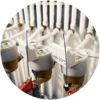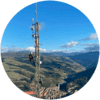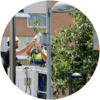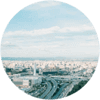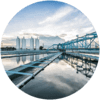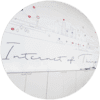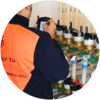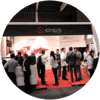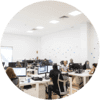When we talk about the water sector, we are talking about a transversal sector that is geographically located all over the planet and that covers practically all the productive sectors, both publicly and privately. That is why, with the growing problems due to climate change, the high levels of environmental pollution caused by discharges of wastewater and industrial waste not treated correctly, together with the low percentages of access and supply of quality drinking water, are generating that water becomes the “white gold” of the 21st century.
Given this issue, as the need arises, the exhaustive control of the consumption and the quality of this precious resource is essential. That is why currently, both the water industry and the wastewater are undergoing a process of digital transformation in their production processes. Through the incorporation of the IoT technology, it allows to monitor water activities and generate real-time data. Thanks to that it is intended to achieve a greater efficiency in the operations, reduce management expenses and improve indicators, such as the water footprint.
Through this article we are going to focus on the evolution that the water supply sector has suffered due to this technological change and how this change impacts on companies and citizens.
How has telemetry evolved in recent years?
In recent years, the meter reading process has evolved by leaps and bounds. For this reason, companies have had to change their business model to adapt to new methods.
Through the traditional system, the workers, who divided the city by zones, manually recorded the readings of the meters. Thus, an operator was able to read an average of 400 meters in a work shift. Over time, with the incorporation of new technologies, this process has become more efficient. Currently they are working with different metering reading methods (ARM).
One of these methods is the reading route, either walking or in a vehicle. For this, a Bluetooth antenna and a mobile terminal are used where the readings of the next meters are received. In this way, the operator can perform meter readings remotely while touring the area. That significantly multiply the number of readings per work shift. In addition, along with the reading, checks are made of possible leaks in the network.
A more advanced version of this system are the Smart Water solutions. These allow to obtain meter readings remotely and automatically in real- time. Thanks to this system is possible to obtain daily data, early detection of possible leaks, establishment of alarms and configuration of warnings and notifications.
How does the water metering solution work?
The mentioned remote reading solutions are based on the remote connection of the meters to a management software where the collected data are stored and analysed. For this purpose, it is necessary to deploy a communication infrastructure of concentrators, repeaters and gateways that collect the data before being sent to the management software. In this way, communications are delivered through various technologies, including, among others, wireless telephony and radio frequency communications, to the public or private services company.
The monitoring of all these data allows to obtain information on the consumption time, multiplying substantially the data available to the management company. This allows, among other benefits, to prematurely identify leaks, accurately obtain clarity between leaks, unbilled water and billable consumption, establish consumption patterns and configure adjustable alarm notifications to prevent anomalies.
In addition, through the integration of third-party systems in the platform, the administrative management of users, their invoices and the customer service system are facilitated. These features are benefits for the final consumer, allowing him to have clear detailer and transparent information about his activity.
¿What are the market opportunities?
The growing trend towards the implementation of these systems creates market opportunities in different industries that a few decades ago were far from being involved in the same business, finding synergies between different industries.
According to the architecture of the new solution outlined above, the industry of the meter manufacturers joins the network companies to update their products, making them smart and operative for this type of solution. As intelligent water measurement is implemented, they will see how their sales are increased by the replacement of current meter networks.
On the other hand, the need for supply management companies to adopt these solutions, will make network and data management companies move into a sector where they had never been. This promotes the creation of increasingly powerful network infrastructures.
Thus, we live in a moment in which both the technological transformation and the concern for environmental conditions including the fight against water shortage, clearly favours the implementation of these remote reading systems.
